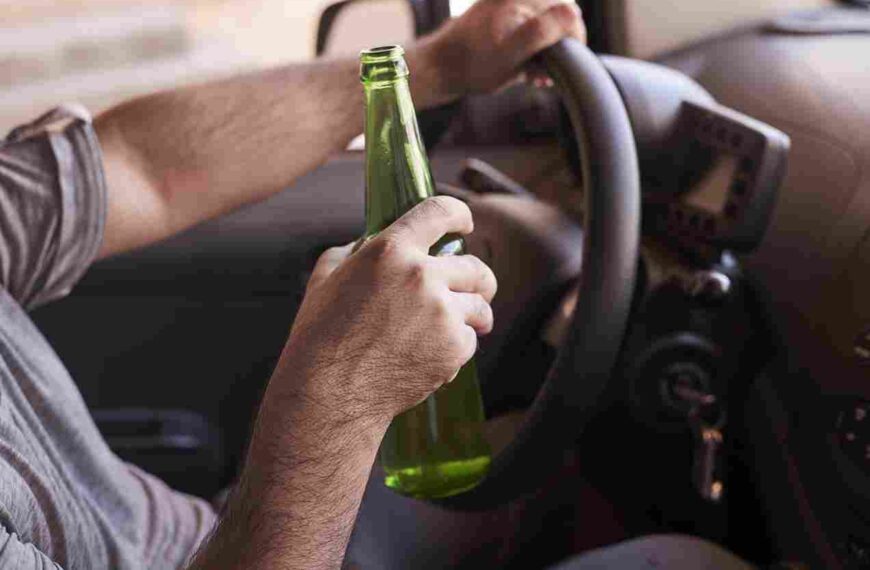
Introduction: Drink and Drive
Driving holds significant importance for many individuals as it provides both convenience and autonomy. Essentially, it serves as a skill that simplifies daily life by facilitating transportation from one location to another. Even learning how to drive and finally getting a valid driving license is often a huge milestone in our lives!
But, driving is a responsibility, and it is important to obey all traffic rules when we drive, especially not driving under the influence of alcohol is a responsibility. It is to make sure that any rash decisions or faulty behavior don’t cause grave accidents that can put lives in danger.
Drink and drive, often known as driving under the influence (DUI) or driving while intoxicated (DWI), is a major problem across the world, despite massive awareness efforts and tougher restrictions. This article discusses the hazards of drunk driving, the repercussions, and preventive actions to make roadways safer for everyone.
Drink and drive refers to the act of operating a motor vehicle while under the influence of alcohol, impairing a driver’s normal functioning. This includes compromised judgment, delayed reaction times, reduced visual acuity, and impaired coordination. Even minimal alcohol consumption can hinder driving abilities, posing grave dangers to both the driver and others sharing the roadways.

Consequences of Drink Driving:
Legal Ramifications:
Laws governing drunk driving differ by jurisdiction, but they all entail harsh penalties. Offenders may face fines, license suspension or revocation, mandated alcohol education programs, community service, or even jail, particularly in situations involving accidents or fatalities.
Risk of Accidents:
Alcohol disrupts the cognitive functions crucial for safe driving, elevating the likelihood of accidents. Data reveals that a significant portion of traffic incidents, injuries, and fatalities stem from drunk driving incidents.
Loss of Life:
Drink and drive is a primary cause of fatalities on the roads. Innocent onlookers, passengers, and even the driver might suffer life-altering injury or death as a result of the irresponsible decision to drive while intoxicated.
Preventive Measures: Drink and Drive
Education and Awareness:
Public awareness efforts emphasizing the hazards of drink and drive play an important role in averting accidents. Educational programs in schools, companies, and communities may encourage responsible alcohol use and stress the significance of designated drivers or alternate transportation choices.
Strict Enforcement:
To deter offenders, strict enforcement of drink and drive laws is essential. This includes conducting sobriety checkpoints, administering breathalyzer tests, and imposing penalties commensurate with the level of impairment and resultant harm caused.
Technological Solutions:
Technological advancements like ignition interlock systems provide an additional safeguard against drunk driving by preventing individuals under the influence of alcohol from starting their vehicles. This innovation adds another layer of protection to combat this dangerous behaviour on the roads.
Impacts on Society:
- Economic Cost – Drink and drive carries significant economic implications, including medical bills, property damage, legal fees, and missed productivity. Individuals with DUI convictions may also face higher insurance costs, adding to their financial burden.
- Emotional Toll – The emotional impact of drink and drive goes beyond the immediate victims of accidents. Families and communities are devastated by the loss of loved ones or the long-term effects of major injuries caused by drunk driving accidents.
- legal System Strain – The judicial system is under strain from processing drink and drive cases, which include court processes, probation services, and jail. If drink-driving occurrences were decreased, these resources may be better directed toward other critical causes.
Global Perspectives:
Regional Variances:
The prevalence of drink and drive incidents and the enforcement of related laws can differ significantly from one region to another. Various factors influence these disparities, including cultural norms regarding alcohol consumption, the effectiveness of enforcement measures, and the availability of alternative transportation options.
Successful Interventions:
Several nations have undertaken successful interventions to reduce drink and drive, such as public awareness campaigns, stiffer fines, and stronger enforcement procedures. By analyzing these effective tactics, other regions can adapt and execute similar programs to minimize drunk driving.
Drink and Drive laws in India:
- Legal Drinking Age: The legal drinking age in India varies per state, ranging from 18 to 25 years. Some states, including Gujarat, Bihar, Nagaland, and Manipur, have completely prohibited alcohol. Others, such as Haryana and Goa, have put the legal drinking age at 25. Most Indian states have a legal drinking age of 21. Regardless of the differences in drinking patterns, the regulations for drinking and driving remain the same throughout all states. Driving under the influence of alcohol is an offense under the Motor Vehicles Act of 2019. Insurance claims are not accepted for accidents caused by this offense. As a result, driving while completely sober is critical to ensuring road safety.
- Alcohol Limit for Drink and Drive: The breath analyzer is used in all states to measure the amount of alcohol in a person’s blood. If the alcohol concentration in the blood surpasses 30mg per 100ml, the person is regarded to be driving under the influence. The same rule applies while driving under the influence of drugs. Such people are unable to maintain sufficient vehicle control and are labeled rule violators. India’s drug laws are unique, and it is critical to grasp them or hire an expert lawyer. Driving under the influence of drugs can result in serious accidents and fines.
- Punishment for Drink and Drive: According to Section 185 of the Motor Vehicles Act, 1988, drunk driving is a criminal offense in India. The punishment for a first-time offense can be imprisonment for six months and a fine of up to ₹2000.
Conclusion
The menace of drink driving continues to loom large over road safety, posing grave risks to both individuals and communities. To combat this threat effectively, it’s crucial to acknowledge the severity of the issue, advocate for stringent law enforcement, and foster a culture of responsible conduct among motorists. By collectively embracing these principles and emphasizing the imperative of abstaining from alcohol consumption before driving, we can strive to eradicate this entirely preventable cause of accidents and fatalities on our roads. Let’s prioritize safety and accountability to safeguard the well-being of all road users and ensure that everyone reaches their destinations unharmed.
Drunk driving, or driving under the influence (DUI), is a criminal crime in India under the Motor Vehicle Act. According to Section 185 of the Motor Vehicles Act, 1988, drunk driving is a criminal offense in India. The punishment for a first-time offense can be imprisonment for six months and a fine of up to ₹2000.
Section 185 of the Motor Vehicle Act 1988 makes it unlawful to drive under the influence of alcohol or drugs. The allowable alcohol level in India is 0.03% per 100ml of blood. That is, detecting more than 30mg of alcohol or drugs in a 100 ml blood sample is a serious violation under Indian law.
Alcohol takes around 30 minutes to two hours to enter your bloodstream. During this period, your respiration may slow and your cognitive abilities may be impaired. As a result, drinking while driving is always a bad idea.




Nice blog and great information about drink and drive very useful
We need to prioritize education, awareness, and stricter enforcement to prevent such tragedies from happening. Let’s make the roads safer for everyone by never underestimating the dangers of drink driving.